A perennial crop for agricultural diversification in mountainous zones
13 to 22 December 2019
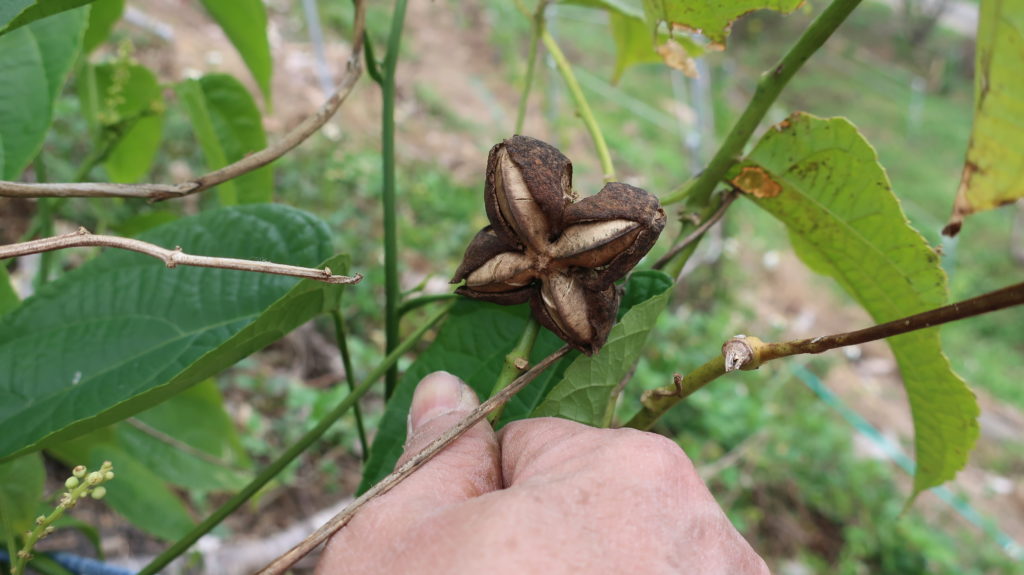
In Zhuolan township, Miaoli county, Ms. Kang and Mr. Tianxiang created Huaguling farm after their retirement. Their agricultural knowledge help them to make use of a really sloped terrain to cultivate a nice diversity of perennials, with Sacha Inchi and mushrooms as their main productions.
I will first let Ms. Kang explain by herself why they chose to grow sacha inchi (activate the subtitles !):
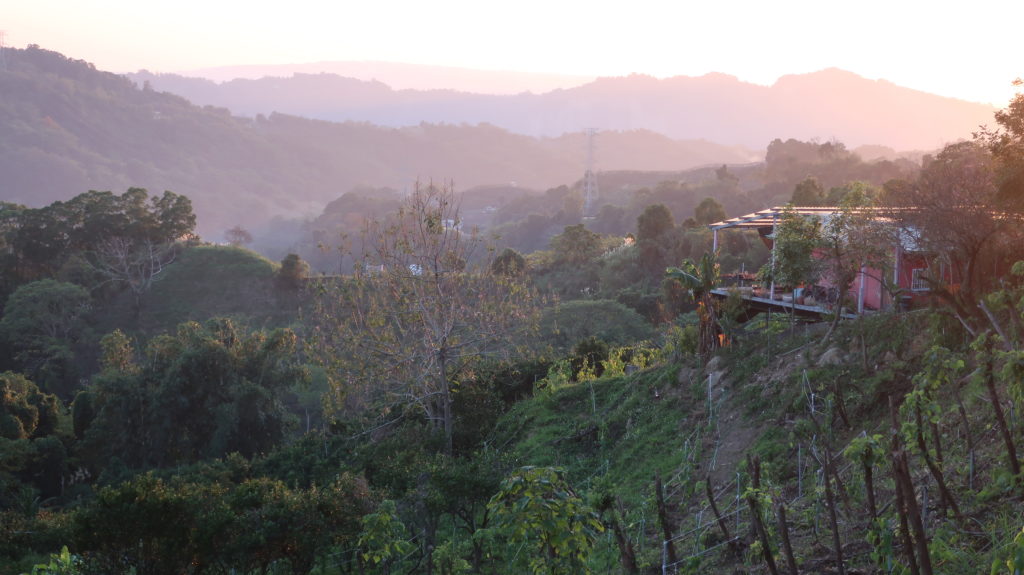
Sacha inchi, also called Inca peanut (and many other names), scientific name Plukenetia volubilis, family Euphorbiaceae, is a perennial vine that can grow to more than two meters in length.
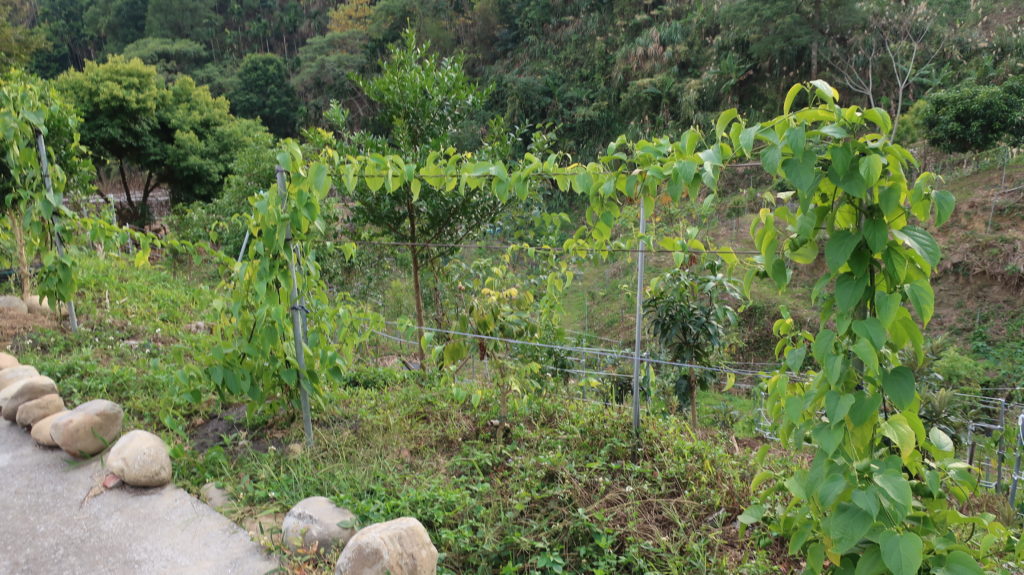
Originating from tropical South-America, it has been cultivated for centuries by indigenous people in the Amazon for their nut-like seeds。


These “nuts” are toxic raw, but roasting render them totally edible, with a taste close to peanut. Like peanuts, they are rich in complete proteins (~ 25 % of total weight) and oil (~ 50%), with around half of that oil being omega-3. This is one of the highest content of omega-3 in plant oil, after linenseed oil and perilla seed oil, while peanut oil doesn’t contain any omega-3 ( 1).
Leaves can also be made into tea after roasting.
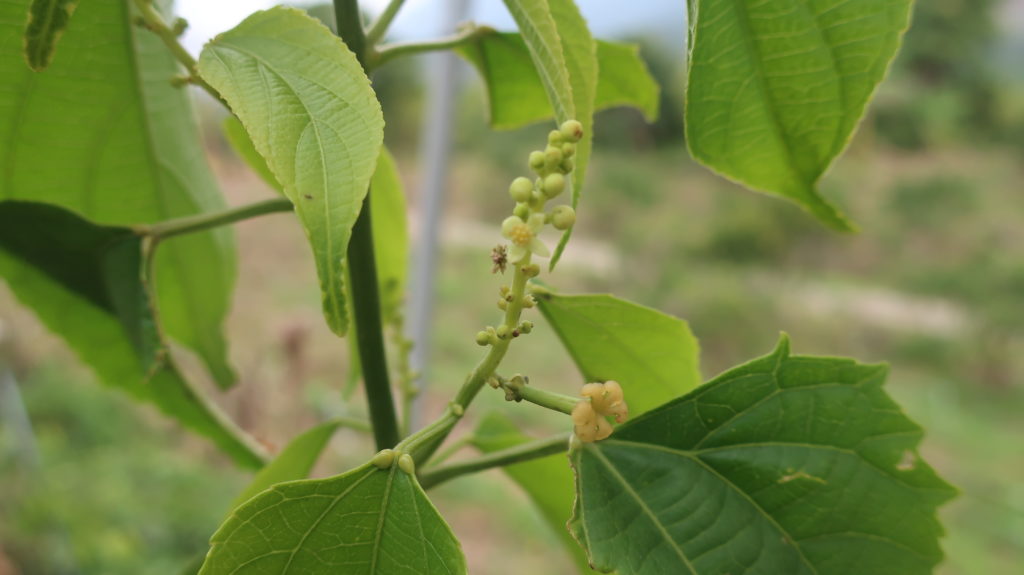
Plants are monoecious, which means that they bear both male and female flowers. They can begin to fruit as soon as 8 months after sowing, and then produce regularly all year round for a few decades (real longevity unknown ?), being able to produce more than 400 seeds each year. An study by the Chinese Academy of Sciences ( 2) reported, at an optimal planting density of 4444 plants per hectares, a yield of around 1300 to 2500kg of seeds per hectares (depending on fertilization level). This yield can be compared to the yield of peanuts, at most 5000kg in a 3 to 5 months growing season.
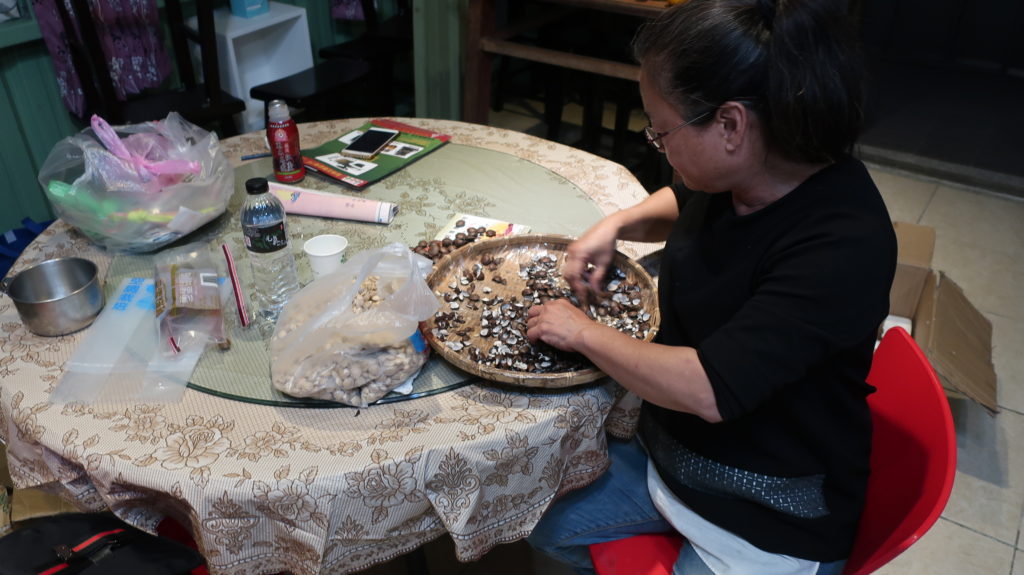
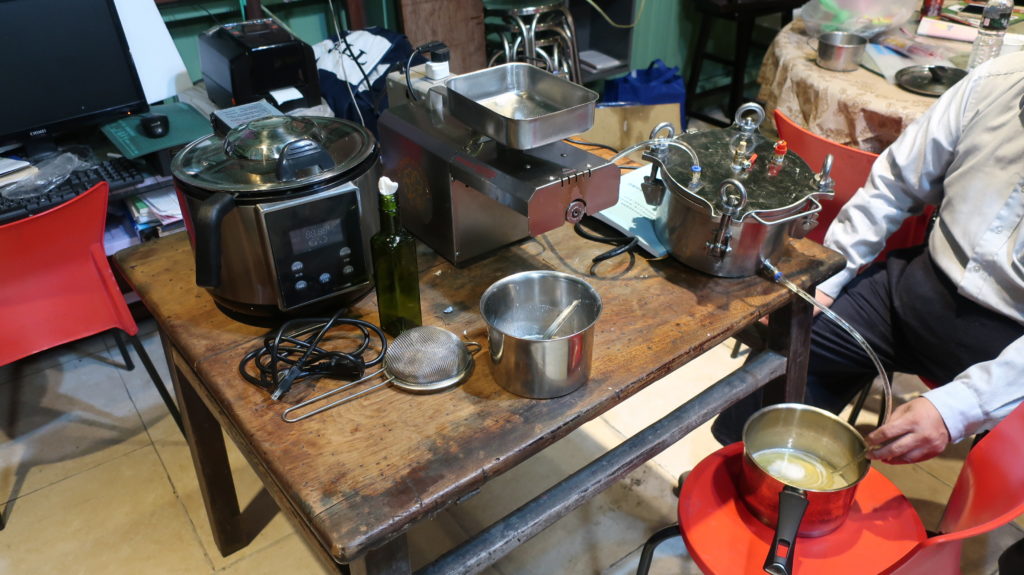
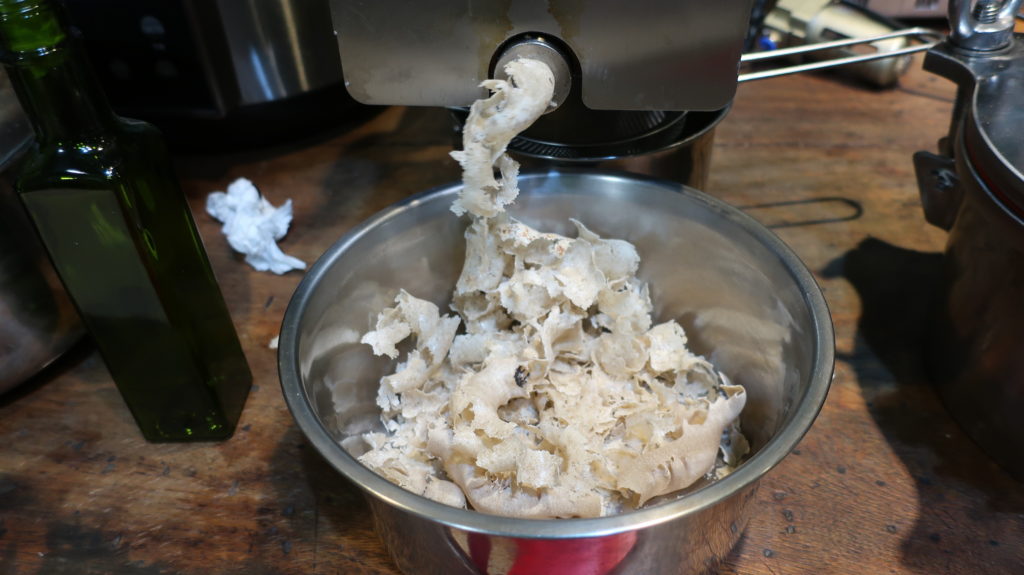
In Taiwan, sacha inchi oil is becoming increasingly popular, and most of it is produced in South-east Asia. It should not be used for cooking at high temperatures. It seems that the seeds are still not authorized to get commercialized as food, but it could make a tasty butter !

Sacha inchi grows well as long as you have a warm, rather sunny emplacement and a rather acidic, well-drained but also moist all-year round soil. With the help of a bit of irrigation, these conditions are perfectly reunited on the south-facing slopes of Huaguling farm! The fact that sacha inchi is a perennial (easy to cultivate without tilling), and that it produces all year round light but high-value harvests also contributed to the choice of this crop on this hilly farm.

Because sacha inchi is a vine, it would be interesting to develop systems of intercropping and agroforestry integrating this crop, which was partly done at Huaguling farm. It is also an alternative to peanuts which is more friendly to the soil, as traditional peanuts farming requires a lot of tilling.
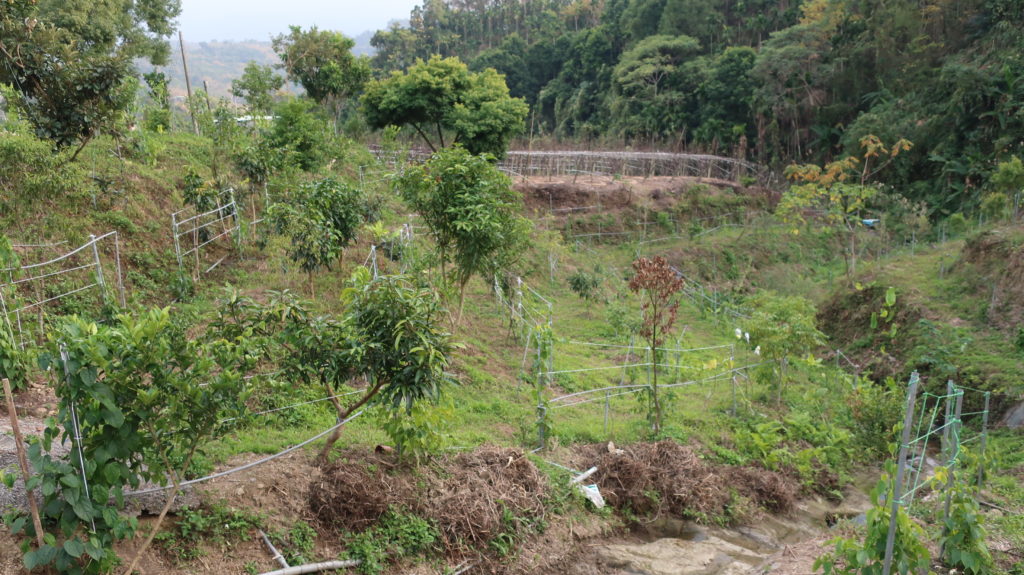
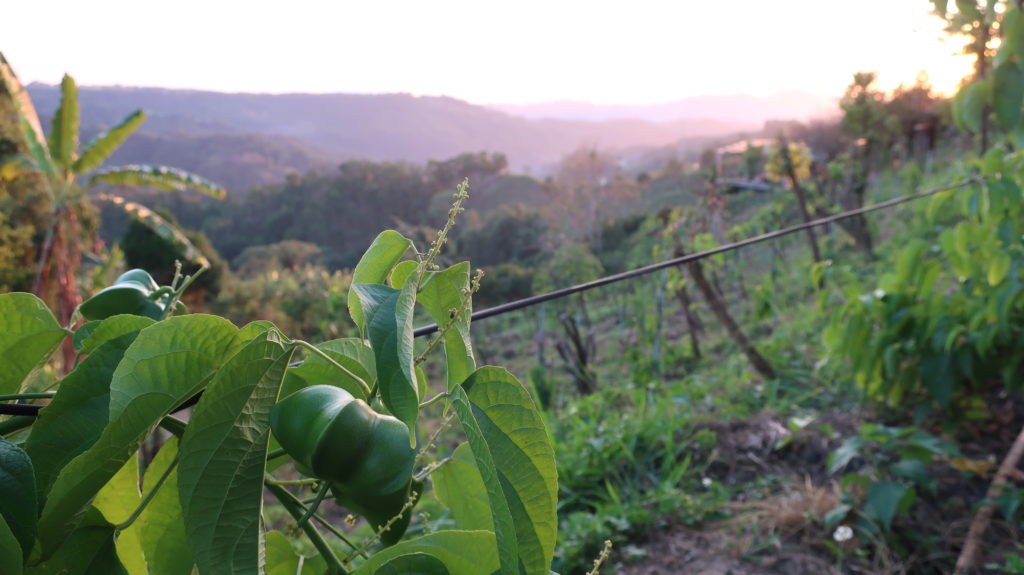
How would you plant and use sacha inchi ?
See you soon for more agroecology !
Notes:
(1) Kodahl, Nete. “Sacha inchi (Plukenetia volubilis L.)—from lost crop of the Incas to part of the solution to global challenges?.” Planta 251.4 (2020): 1-22. (back to text)
(2) Yang, C., et al. “Planting density and fertilisation independently affect seed and oil yields in Plukenetia volubilis L. plants.” The Journal of Horticultural Science and Biotechnology 89.2 (2014): 201-207. (back to text)
